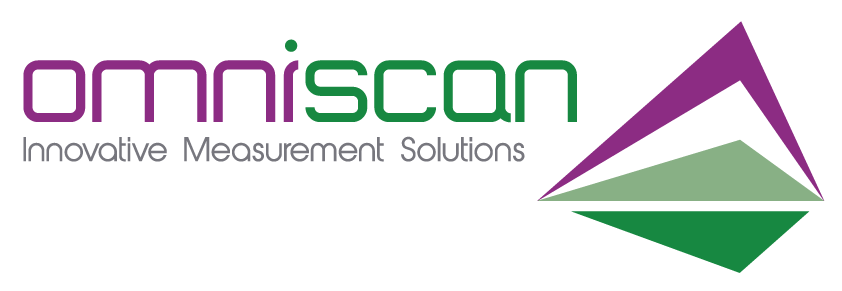Surface profilers are essential tools in industries where surface quality and precision play a crucial role in product performance. From manufacturing to material science, they are used to measure the roughness, texture, and topography of materials with high accuracy. Whether you’re in need of analysing a product’s surface finish, ensuring quality control, or improving design, surface profilers offer valuable insights. Read on to learn about what surface profilers are, how they work, their benefits, and why they are indispensable for various industries.
What is a Surface Profiler?
A surface profiler is an instrument used to measure the surface texture, roughness, and topography of materials. It provides detailed information about the microscopic features of a surface, such as peaks, valleys, and waviness. These measurements are crucial for understanding the surface properties of materials, which can influence factors like friction, wear resistance, and adhesion.
Surface profilometers come in different types, including contact-based and non-contact systems. Contact-based profilometers use a stylus that physically touches the surface to measure height variations, while non-contact systems, such as laser and optical profilers, use light or laser beams to capture surface details without making contact.
How Do Surface Profilers Work?
Surface profilers work by measuring vertical variations in the surface height at a microscopic level. In contact-based profilometers, a fine stylus is dragged across the surface, and the vertical movement of the stylus is recorded to create a profile of the surface texture. The data is then analysed to determine roughness and other surface characteristics.
In non-contact surface profilometers, technologies like white light interferometry or laser scanning are employed. These methods use light to scan the surface, capturing data points based on light reflection. By analysing the reflected light, the profiler can create detailed 3D maps of the surface and calculate its roughness or topography with high precision.
Key Benefits
- High Precision and Accuracy: Surface profilers offer micron-level or even nanometre-level accuracy, making them ideal for industries where surface quality directly impacts performance. Whether measuring coatings, films, or raw materials, these tools provide highly detailed and reliable data.
- Non-Contact Measurement: Non-contact surface profilers, such as laser and optical systems, prevent damage to delicate surfaces by avoiding physical contact. This is particularly useful when working with fragile materials or small components that could be compromised by direct contact.
- Efficiency and Speed: Surface profilometers can quickly scan large areas, providing detailed data in less time compared to traditional measurement methods. This makes them a cost-effective and time-saving option for quality control and research applications.
- Comprehensive Surface Analysis: Surface profilers can measure various surface features, including roughness, waviness, texture, and even defects. This provides a holistic view of a material’s surface, allowing for better decision-making during the design and manufacturing processes.
- Versatility: Surface profilers are versatile instruments, useful across multiple industries and applications. From evaluating the surface finish of automotive parts to analysing the microstructure of materials, these devices can measure surfaces of all types—flat, curved, rough, or smooth.
Applications of Surface Profilers
Surface profilers are widely used in industries that require precise surface measurement for quality control, research, and design optimisation. Here are some key applications:
1. Manufacturing and Quality Control
In manufacturing, surface profilers are essential for ensuring that parts meet specific surface finish standards. For example, automotive manufacturers use surface profilers to measure the smoothness of engine components, body panels, and other critical parts. These measurements help maintain consistency and ensure the components perform as expected.
2. Material Science
Surface profilers are also used extensively in material science to study the properties of materials such as metals, polymers, and ceramics. By analysing surface roughness, scientists can better understand how materials interact with other substances, such as lubricants or coatings, and determine their wear resistance or corrosion properties.
3. Semiconductor Industry
The semiconductor industry relies on surface profilers to inspect the surfaces of wafers and thin films during the manufacturing of microelectronic devices. Precise surface measurements are vital to detect defects, optimise performance, and ensure the quality of semiconductor components.
4. Aerospace and Automotive Engineering
In aerospace and automotive engineering, surface finish is critical for both performance and safety. Surface profilers help engineers measure and analyse the texture of parts such as turbine blades, engines, and other high-performance components. This analysis ensures the parts are free of defects and are manufactured to the required specifications.
5. Optics and Coatings
For optical components, such as lenses, mirrors, and coatings, surface profilometers are used to ensure a high-quality finish that is free from defects. Surface roughness can affect the optical properties of lenses and mirrors, so maintaining an optimal surface finish is critical to ensuring performance.
Why Choose Surface Profilers?
Surface profilers provide precise, detailed measurements that are essential for industries requiring high-quality surface finishes. Their ability to measure a wide range of surface types and textures makes them versatile tools for quality control, research, and manufacturing. With both contact-based and non-contact options available, surface profilometers offer flexibility and reliability for a variety of applications.
By incorporating surface profilometers into your workflow, you can improve product quality, optimize designs, and reduce manufacturing defects, ensuring that your components meet the highest standards of performance.
Conclusion
Surface profilers are indispensable tools in industries that demand high precision in surface measurement. Whether you’re working in manufacturing, material science, or engineering, these instruments provide critical insights into surface texture, roughness, and topography. With their ability to deliver accurate, efficient, and detailed measurements, surface profilometers are helping businesses achieve better product quality, improved designs, and more efficient processes.
Investing in a surface profiler can enhance the accuracy of your quality control processes, leading to better results and a more competitive edge in your industry.
Get in touch today to see how we can help your industry.


